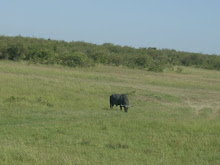As for the rest of this entry, it's just some class notes and other info. I forgot to bring a pen to class, so no writing for me!!! Unfortunately, I am not a great typist, so these notes are, as my former In-School-Suspension teacher used to say, "Rude, crude, and uncouth." However crude, here they are:
On the Mercator projection, the distance measurements are true for the equator and about 15 degrees north and south of the equator. Large areas are distorted on a Mercator projection, most extremely so around the poles. The Mercator projection is a conformal map, meaning that it preserves shapes and angles. In a transverse Mercator, the same logic applies, only the area that is not distorted is at the poles. In order to get a more accurate picture of any given area on Earth, run the Mercator projection’s “great circle” around the Earth around the desired area.
Polyconic Map Projection
Equidistant Conic Map Projection
Lambert Conformal Conic
Gnomonic Projection
Albers Projection
Lambert Azimuthal Equal Area
Orthographic Map Projection
Robinson Map Projection
Sinusoidal Equal Area Projection
Stereographic Projection
Azimuthal Projection Map
Miller Cylindrical Projection
Here is a link to detailed descriptions of the aforementioned maps.
I think that is going to be all for this edition of GIS WTF? I am going to be traveling to Memphis tomorrow for a Rifle Match, so I will not be attending the Thursday class, but I will try to post something from the trip for all of my loyal followers. Until then, this should keep you entertained. If not, and you are a fellow Cochranite, feel free to use this nifty website I stumbled upon to see what your neighbor's land is worth! Finally, if none of the above links are working, then you must be into this...



